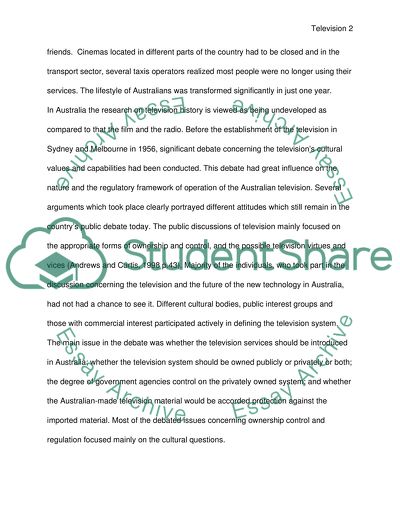Cite this document
(“Introduction of television to Australia in 1956 Essay”, n.d.)
Retrieved from https://studentshare.org/environmental-studies/1422916-what-were-the-key-debates-and-questions-framing
Retrieved from https://studentshare.org/environmental-studies/1422916-what-were-the-key-debates-and-questions-framing
(Introduction of Television to Australia in 1956 Essay)
https://studentshare.org/environmental-studies/1422916-what-were-the-key-debates-and-questions-framing.
https://studentshare.org/environmental-studies/1422916-what-were-the-key-debates-and-questions-framing.
“Introduction of Television to Australia in 1956 Essay”, n.d. https://studentshare.org/environmental-studies/1422916-what-were-the-key-debates-and-questions-framing.


